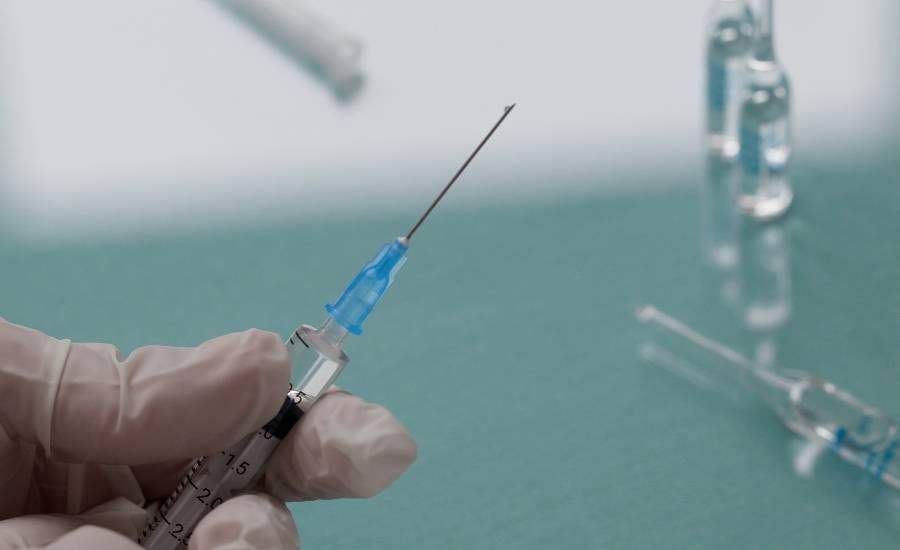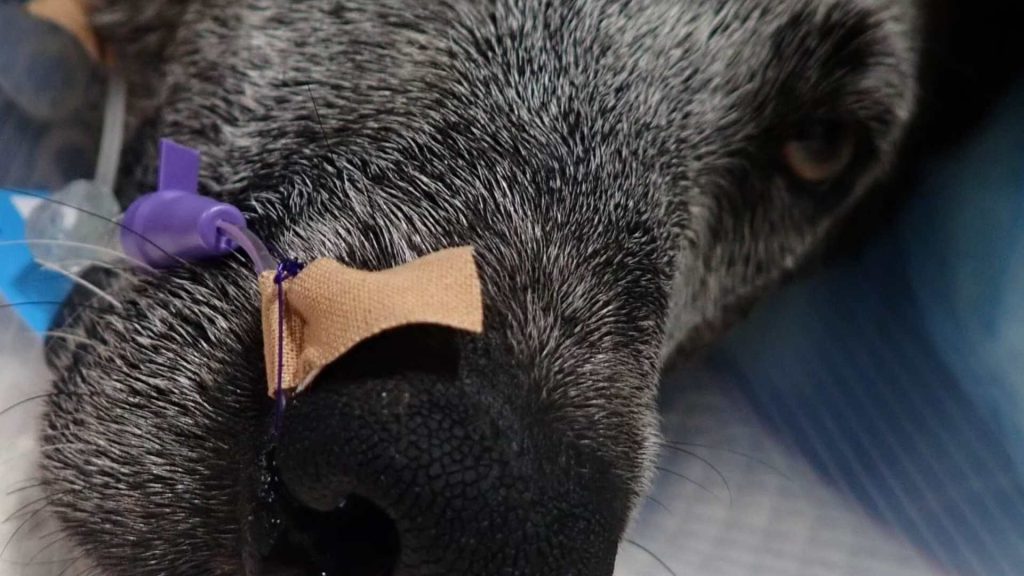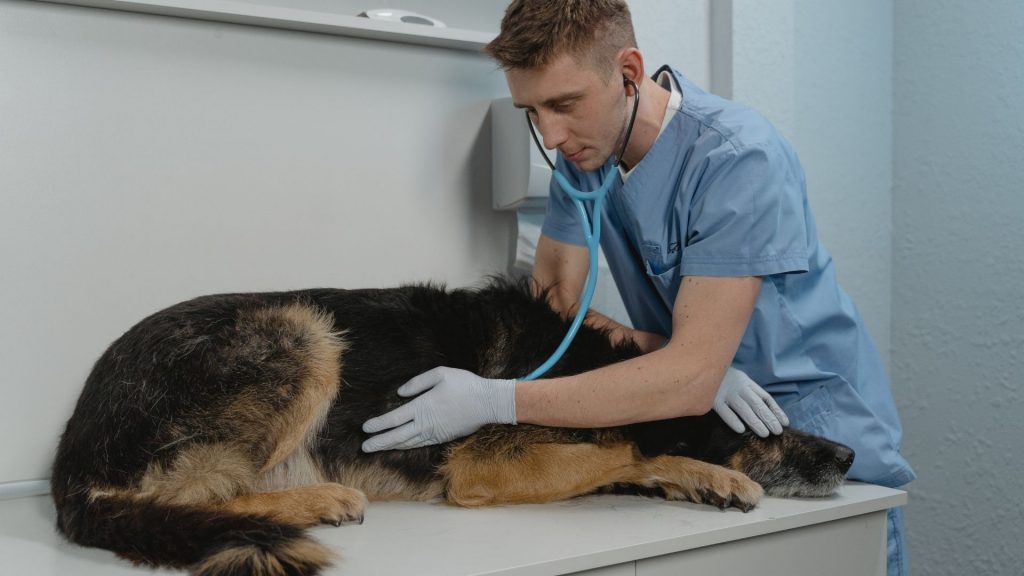Philip R Judge BVSc MVS PG Cert Vet Stud MACVSc (Veterinary Emergency and Critical Care; Medicine of Dogs)
Introduction to Hypotensive Resuscitation
Patients with trauma frequently present with clinical symptoms of hypovolaemic shock. Traditional treatment of shock involves administration of boluses of isotonic crystalloids, and occasionally synthetic colloids, to restore normovolaemia and normal systolic blood pressure, and to reduce sympathetic nervous system activation, in an effort to improve global tissue perfusion1.
However, restoration of intravascular volume and blood pressure increases risk of inducing blood loss from injured organs, such as the liver, lungs and spleen, among others, thereby potentially increasing the risk of haemorrhage and mortality1. In humans, uncontrolled bleeding and exsanguination are the leading cause of preventable death following trauma2 – recognizing that most injuries resulting in exsanguination in people are from sharp, penetrating injuries2.
Hypotensive resuscitation refers to the practice of either delayed resuscitation, or restricted resuscitation to achieve a potential decrease in patient bleeding, and improved survival rates1,2.
Why are we talking about it?
As mentioned above, the restoration of intravascular volume and blood pressure in the trauma patient with shock seems logical. However, in the actively bleeding patient, this approach may increase blood loss1. The main purpose of deliberately inducing hypotension intraoperatively is to decrease blood loss, thereby improving operating conditions or decreasing the need for blood transfusions1.
Experimental studies show that hypotensive resuscitation results in increased long-term survival following trauma. Additionally, early studies in humans with penetrating trauma demonstrated a significant reduction in mortality when resuscitation was delayed until the time of surgical intervention1,2,3.
Furthermore, more recent studies in animals focused on the concept of permissive hypotension, where patients were resuscitated early following trauma, but in a manner that did not achieve a return to normal blood pressure. These moderately under-resuscitated animals tended to experience less intra-peritoneal haemorrhage than animals resuscitated to normal mean arterial blood pressures4. Additionally, other experimental studies show permissive hypotension does not reduce regional organ perfusion when compared to normotensive controls5, and that moderate hypotension for less than 30 minutes can be tolerated without progression to end-organ failure in many trauma patients3.
However, the evidence in support of hypotensive resuscitation is not entirely conclusive. In 2 prospective studies carried out since 2002, mortality rate was not significantly different between moderate hypotensive resuscitation and normotensive resuscitation patients with haemorrhagic shock6.
What is it?
There are several different types of hypotensive resuscitation described1-6:
- Delayed resuscitation describes a situation in which a period of hypotension is intentionally prolonged following trauma until the patient is able to receive operative intervention to arrest bleeding
- Permissive hypotension describes the situation where restrictive fluid therapy following trauma increases systolic blood pressure without reaching normotensive end-points
- Deliberate hypotension describes a controlled period of hypotension in the intra-operative period in order to reduce intra-operative haemorrhage
For the most part, clinically relevant studies of hypotensive resuscitation in the trauma patient refers to permissive hypotension, in which some intravenous fluid is administered to the patient, but normotensive resuscitation end-points are not achieved, to reduce risk of exacerbating haemorrhage1-3.
How does it work?
Aside from reducing intravascular pressure, and the associated risk of dislodging blood clots from damaged tissues following trauma1, there are other proposed mechanisms by which hypotensive resuscitation may benefit the trauma patient. Chief among these is avoidance of the so-called “triad of death” – the constellation of 3 conditions in the trauma patient that are associated with increased risk of death2 – namely hypothermia, acidosis and coagulopathy. Diminished blood volume and reduced cardiac output lead to hypothermia, which can lead to reduced coagulation, bleeding, and the presence of acidosis in tissues due to hypoperfusion. These conditions are worsened by infusion of large volumes of crystalloid fluid, including exacerbation of hypothermia and dilutional coagulopathy2,6.
Fluid restriction in early resuscitation, when combined with early transfusion to manage anaemia and coagulopathy, with or without damage control surgery, form part of a multi-faceted approach designed to reduce mortality2,6,7,8.
When is it recommended?
Hypotensive resuscitation may potentially be utilized in the patients with penetrating or blunt abdominal trauma who meet the following criteria1-3,9.
- No evidence of traumatic brain injury or spinal cord injury
- No evidence of pre-existing cardiovascular disease
- No evidence of compromised organ function
Hypotensive resuscitation is mainly indicated in the setting of a traumatic haemorrhage, to rapidly stabilise the patient before more definitive procedures can be performed to address the source of bleeding. It should not be utilized after bleeding is controlled.
As outlined in the points above, special consideration must be made in evaluating the underlying aetiology, co-morbidities, and background of the patient’s presentation to the attending clinician.
When should it be avoided?
In general, hypotensive resuscitation is intended for patients with severe haemorrhage, which is not controlled, and which may require large volume blood transfusion +/- damage control surgery. It is not intended for patients with haemorrhage that has been controlled, or for patients who respond to treatment with initial fluid administration without complication6,9. In addition, hypotensive resuscitation may potentially worsen outcome in the following cohorts of patients:
- Patients with cranio-cerebral trauma (head trauma and traumatic brain injury)6,11,12
- Patients with spinal trauma13,14
- Patients at risk of perfusion-compromised organ dysfunction, e.g., acute kidney injury6,10
- Patients in the advanced stages of shock (late decompensatory shock)6,10
What evidence do we have in dogs and cats?
To date, there is no data on the efficacy of hypotensive resuscitation in dogs or cats. Furthermore, neither strict guidelines nor a clear fluid preference for resuscitation of traumatic shock have been defined15.
What about small volume resuscitation therapy?
Small volume resuscitation therapy describes the bolus administration of 5-10 ml/kg isotonic crystalloids to patients with hypovolaemic shock over a short period of time (5-10 minutes) followed by patient reassessment for ongoing clinical signs of hypovolaemia15.
In models of haemorrhagic shock in animals, the use of bolus small volume resuscitation to achieve hypotensive end-points improved microcirculatory blood flow and tissue perfusion over patients who received no fluid resuscitation at all1. The duration and magnitude of the hypotensive fluid therapy end-points in trauma on organ function have, so far, not been substantially evaluated in humans, and have not been evaluated in dogs or cats, however.
What about pro-coagulant therapy?
The use of pro-coagulants has been studied in humans.
The use of recombinant factor VIIa in human trauma patients has not resulted in consistent improvement in patient survival8.
A study evaluating the effect of desmopressin acetate (DDAVP, Vasopressin) as a stimulator of factor VIII and von Willebrand’s factor, that increases adhesion of platelets to injured epithelium, was carried out in a rabbit model of adnominal haemorrhage8. This study revealed no significant difference in bleeding in either normotensive or permissive hypotensive resuscitation groups when given 15 minutes following haemorrhage, and only a mild increase in clot strength8.
Tranexamic acid, an anti-thrombolytic drug, has been used in humans for many years, and is associated with reduced abdominal haemorrhage and mortality rate when used within 3 hours of trauma16. Its use in veterinary patients has been adopted in many trauma patients as a result of experience and evidence in the human field, including in traumatic brain injury, pulmonary contusions, and blunt force abdominal trauma.
Conclusions
The concept of hypotensive resuscitation for bleeding patients, at present, sounds rational, but has limited clinical evidence in humans, and no published evidence of either safety or efficacy in dogs and cats.
Undoubtedly, the best way to manage life-threatening haemorrhage for patients with organ laceration is surgical control in the operating room1-3.
For patients with organ contusion, avoidance of excessive volumes of intravenous fluid therapy, to achieve resuscitation to mean arterial pressures of 60-70 mm Hg or systolic arterial pressure of 90 mm Hg, when combined with anti-thrombolytic drugs, such as tranexamic acid, the application of abdominal wraps to elevate intra-abdominal pressure, early transfusion therapy, and, if required, damage control surgery seem the most appropriate interventions to manage life-threatening haemorrhage16,17.
Current experimental and clinical evidence suggest that this approach may be more beneficial to patients than rapid administration of large volumes of crystalloid fluids to achieve normal blood pressure values, by limiting both trauma-induced coagulopathy and hypothermia2,17. Ironically, the presence of mild hypothermia in patients resuscitated with hypotensive resuscitation in experimental studies is associated with improved survival, reduced functional damage to organs, such as the liver, kidneys and intestines, as well as reduced bleeding, despite causing prolonged clotting times17. Further research into this modality of therapy is warranted, given the known potential deleterious effects of hypothermia in trauma patients2.
It is worthy of note that the available models of hypotensive resuscitation are currently based on a limited number of clinical trials in laboratory animals, using models of trauma, and limited numbers of published case series and reviews in human literature. It is important that controlled clinical trials be established to determine the efficacy and safety of the treatments2.
Furthermore, the requirement for damage control surgery, and the ability of the resuscitation team to perform such surgery in the veterinary clinic setting also needs to be factored into the treatment decisions made for each patient.
In all cases, regardless of resuscitation methods used, limitation of fluid volume in resuscitation must be balanced with provision of enough fluid to maintain end-organ perfusion6.
References:
- Kreimeier, U., S. Prueckner, and K. Peter. “Permissive hypotension.” Schweizerische Medizinische Wochenschrift 130, no. 42 (2000): 1516-1524.
- Gourgiotis, Stavros, George Gemenetzis, Hemant M. Kocher, Stavros Aloizos, Nikolaos S. Salemis, and Stylianos Grammenos. “Permissive hypotension in bleeding trauma patients: helpful or not and when?.” Critical care nurse 33, no. 6 (2013): 18-24.
- Bickell, William H., Matthew J. Wall Jr, Paul E. Pepe, R. Russell Martin, Victoria F. Ginger, Mary K. Allen, and Kenneth L. Mattox. “Immediate versus delayed fluid resuscitation for hypotensive patients with penetrating torso injuries.” New England Journal of Medicine 331, no. 17 (1994): 1105-1109.
- Li, Tao, Yu Zhu, Yi Hu, Lijie Li, Youfang Diao, Jing Tang, and Liangming Liu. “Ideal permissive hypotension to resuscitate uncontrolled hemorrhagic shock and the tolerance time in rats.” The Journal of the American Society of Anesthesiologists 114, no. 1 (2011): 111-119.
- Schmidt, Bruno M., Joao B. Rezende-Neto, Marcus V. Andrade, Philippe C. Winter, Mario G. Carvalho, Thiago A. Lisboa, Sandro B. Rizoli, and Jose Renan Cunha-Melo. “Permissive hypotension does not reduce regional organ perfusion compared to normotensive resuscitation: animal study with fluorescent microspheres.” In World Journal of Emergency Surgery, vol. 7, no. 1, pp. 1-10. BioMed Central, 2012.
- Hughes, Naomi T. MD*; Burd, Randall S. MD, PhD†; Teach, Stephen J. MD, MPH‡ Damage Control Resuscitation, Pediatric Emergency Care: September 2014 – Volume 30 – Issue 9 – p 651-656
- ATLS Subcommittee; American College of Surgeons’ Committee on Trauma; International ATLS working group. Advanced trauma life support (ATLS®): the ninth edition. J Trauma Acute Care Surg. 2013 May;74(5):1363-6.
- Rezende-Neto, J. , Rizoli, S. , Andrade, M. , Ribeiro, D. , Lisboa, T. , Camargos, E. , Martins, P. & Cunha-Melo, J. (2010). Permissive Hypotension and Desmopressin Enhance Clot Formation. The Journal of Trauma: Injury, Infection, and Critical Care, 68 (1), 42-51.
- M Das J, Anosike K, Waseem M. Permissive Hypotension. [Updated 2021 Jul 5]. In: StatPearls [Internet]. Treasure Island (FL): StatPearls Publishing; 2021 Jan-. Available from: https://www.ncbi.nlm.nih.gov/books/NBK558915/
- Chesnut, Randall M., Lawrence F. Marshall, Melville R. Klauber, Barbara A. Blunt, Nevan Baldwin, Howard M. Eisenberg, John A. Jane, Anthony Marmarou, and Mary A. Foulkes. “The role of secondary brain injury in determining outcome from severe head injury.” The Journal of trauma 34, no. 2 (1993): 216-222.
- Chesnut, Randall M. “Avoidance of hypotension: conditio sine qua non of successful severe head-injury management.” Journal of Trauma and Acute Care Surgery 42, no. 5S (1997): 4S-9S.
- Henry, Sharon, and Thomas M. Scalea. “Resuscitation in the new millennium.” Surgical Clinics of North America 79, no. 6 (1999): 1259-1267.
- Vale, Fernando L., Jennifer Burns, Amie B. Jackson, and Mark N. Hadley. “Combined medical and surgical treatment after acute spinal cord injury: results of a prospective pilot study to assess the merits of aggressive medical resuscitation and blood pressure management.” Journal of neurosurgery 87, no. 2 (1997): 239-246.
- Driessen, Bernd, and Benjamin Brainard. “Fluid therapy for the traumatized patient.” Journal of Veterinary Emergency and Critical Care 16, no. 4 (2006): 276-299.
- Chatrath, Veena, Ranjana Khetarpal, and Jogesh Ahuja. “Fluid management in patients with trauma: Restrictive versus liberal approach.” Journal of anaesthesiology, clinical pharmacology 31, no. 3 (2015): 308.
- Ramirez, Ricardo J., Philip C. Spinella, and Grant V. Bochicchio. “Tranexamic acid update in trauma.” Critical care clinics 33, no. 1 (2017): 85-99.
- Pang, Allan, Ravi Chauhan, and Tom Woolley. “Permissive hypotension.” In Damage Control Resuscitation, pp. 101-115. Springer, Cham, 2020.






















